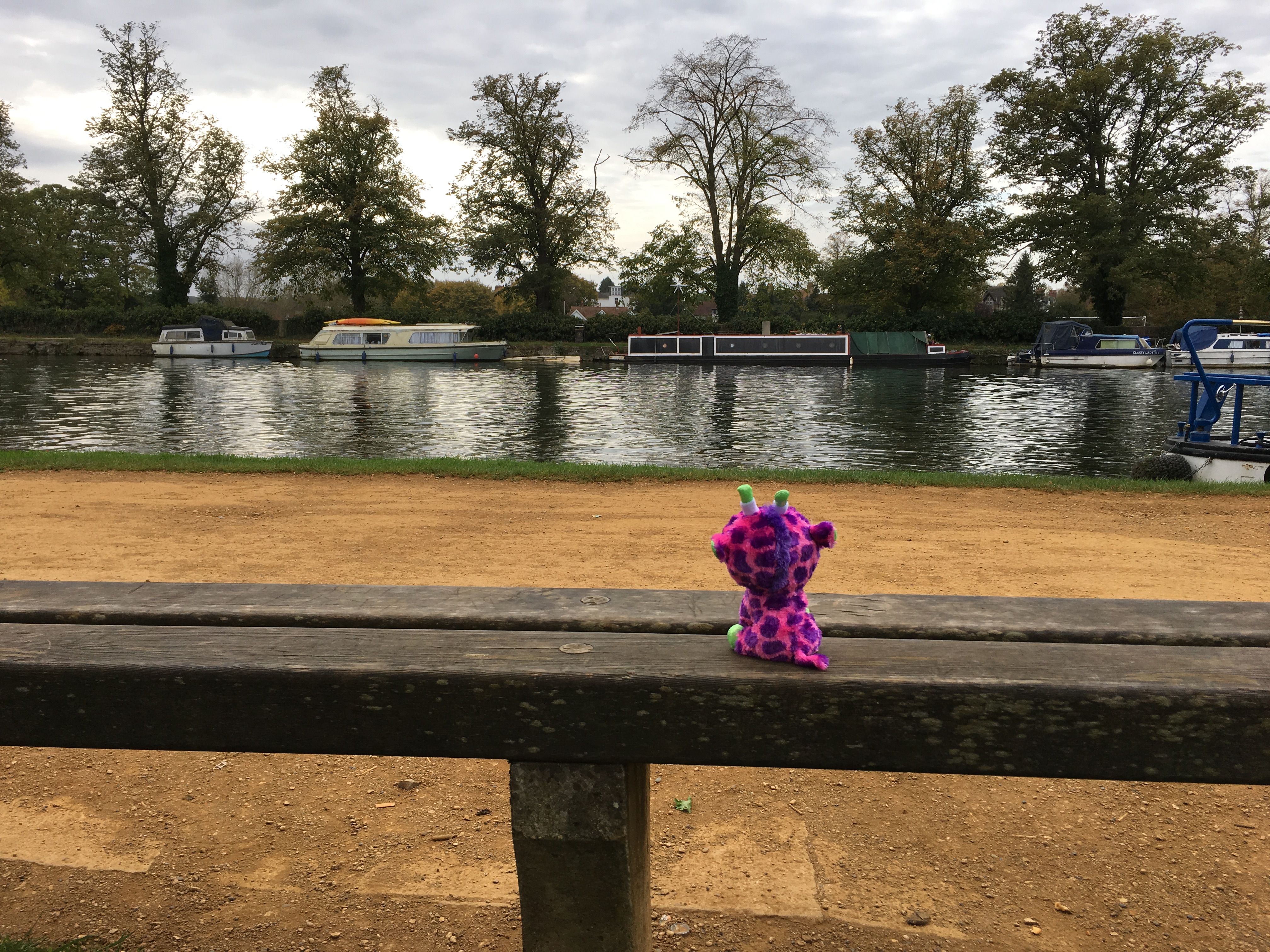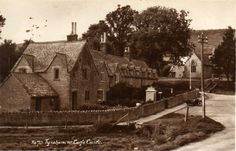Procrastination and an internet surfing session produced this first article in the series “Surfing for History”.
It is always interesting to discover the degrees of separation between people on this planet, but what about the connections between a beloved fictional dog, the first British ship torpedoed by a German U-boat, a musical about a ghost village, and the Thomas Hardy Trail?
The answer began with a simple search question: “What happened on January 1?” Google brought up several sites dedicated to historical events for each day of the year. One of those events was the WWI sinking of HMS Formidable. Following the ill-fated Formidable led to an obituary and the common link for this unlikely grouping.
The connection is Rodney Legg, a man who dedicated his life to writing history books about England’s Dorset and Somerset counties, and who, along with other members of the Open Spaces Society worked to preserve public lands.
Legg, a journalist and prolific writer of over one hundred books, researched the 1915 New Year’s Day sinking of the battleship Formidable off Star Point in South Devon. Over five-hundred men died in the incident. Rodney Legg’s posthumous book, Dorset in the First World War details The Formidable Tragedy and remembers the dog who is thought to be the inspiration for author Eric Knight’s 1938 book Lassie Come Home.
In an article published by the Lyme Regis Museum as part of its History of Objects series, author Richard Bull states the HMS Formidable was assigned to protect the coast against German invasion. It carried somewhere between 741-751 men while on patrol off the Devon coast on December 31, 1913. As part of a fleet assigned to the Fifth Battle Squadron, Formidable participated in gunnery exercises in Lyme Bay and was in what Bull calls the “coffin position” at the rear of the line of ships. In what was to become a controversial decision, Vice-Admiral Sir Lewis Bayly did not order the ships back to Portland Bay, although there were reports of German submarines in the area. The stormy conditions were deemed a deterrent to U-boats, although the fleet changed direction through the night as an extra precaution.
The first torpedo hit the ship at 2:20 AM on January 1, 1916. Its captain, Arthur Noel Loxley, attempted to limp Formidable back to the shore, but after losing all steam and power, he ordered the ship abandoned. HMS Topaze and the cruiser Diamond picked up a total of eighty men before another submarine was spotted and the Formidable was hit again before sinking at 4:45 AM. The ship carried boats used to transport goods and men to shore and back. These included one sail and three steam pinnaces (large boats that could carry about 80 men). Because of the storm, some of the boats were smashed or capsized, killing their occupants. According to Bull, other men used anything they could grab onto as flotation devices, even the ship’s piano. The Captain, along with his terrier, Bruce, went down with the ship. Bruce’s body was recovered on Chesil Beach. He is buried in the Fox-Strangeway’s dog cemetery (part of Abbotsbury Gardens).
One of the surviving boats, deemed the Brixham Pinnace made it fifteen miles off of Berry Head and seventy-one men were rescued by a trawler called Provident and taken to Brixham.
Although the Lyme Pinnace, carrying another seventy-one men, was launched before the second torpedo hit the ship, debris from the explosion killed several men in the escaping pinnace. When the Lyme Pinnace reached shore, after twenty-two hours of continual bailing by its occupants, fifty-one men arrived alive, along with six bodies and nine unconscious men, three of whom died later.
One of the men who arrived unconscious and with no pulse was Able Seaman John Cowan. Cowan lay with the dead men in a room at the Lyme Regis Pilot Boat Hotel, but the landlord’s collie, name Lassie, intuited that Cowan still lived. Lassie provided warmth and licked Cowen’s body until he revived. Cowen and Lassie are reported to have been inseparable since the incident, yet, as Bull contends, Lassie is not the dog in any of the Cowen photos. Lassie received a silver collar and the Humane Society’s shield. And, if true, a place in popular literature.
 Back to Rodney Legg’s obituary. Legg, described as “interesting”, was an activist for opening up access to public lands and heritage sites. Serving as a representative for the Open Spaces Society with the National Trust, Legg campaigned for Max Gate, author Thomas Hardy’s last home, to be preserved and opened to the public.
Back to Rodney Legg’s obituary. Legg, described as “interesting”, was an activist for opening up access to public lands and heritage sites. Serving as a representative for the Open Spaces Society with the National Trust, Legg campaigned for Max Gate, author Thomas Hardy’s last home, to be preserved and opened to the public.
 Dorset County appeared throughout Hardy’s novels. Having spent much of his life in Dorset, Hardy who was also an architect, built Max Gate for himself and his first wife, Emma. After Emma died, Hardy lived there with his second wife, Florence. Due to Legg’s efforts, visitors can tour the house and sit on Hardy’s bench in the garden to contemplate Hardy and the oft-told stories of ghostly visits to the house.
Dorset County appeared throughout Hardy’s novels. Having spent much of his life in Dorset, Hardy who was also an architect, built Max Gate for himself and his first wife, Emma. After Emma died, Hardy lived there with his second wife, Florence. Due to Legg’s efforts, visitors can tour the house and sit on Hardy’s bench in the garden to contemplate Hardy and the oft-told stories of ghostly visits to the house.
Another search on Max Gate leads to the Lyme Regis website and a link to the map of the Thomas Hardy Trail, a self-guided foray into Hardy country that includes his birthplace in Higher Bockhampton. The guide provides various insights into the landscapes and buildings found in Hardy’s novels and poems. Three interesting stops on the Hardy tour are worth mentioning.
Hardy’s good friend T.E. Lawrence (Lawrence of Arabia) lived and is buried in Morenton. Any Hardy or T.E Lawrence fans should consider joining the National Trust as it hosts “Tea with Mr. Hardy and T.E Lawrence” at Max Gate, May 18, 2017.
The Hardy Monument, found near Weymouth, is listed on the Thomas Hardy Tour — a bit misleading since the monument is to another Thomas Hardy, albeit a distant relative of the writer. The Hardy Monument is dedicated to Vice Admiral Sir Thomas Masterman Hardy, the Trafalgar hero who attended Admiral Horatio Nelson as he lay dying. Nelson is reported to have uttered the words “Kiss me, Hardy” before he died.
Of more interest is the churchyard in Stinsford where Hardy wanted to be buried, next to Emma and other members of his family. His ashes ended up interned in Westminster, but his heart was buried in Stinsford.
A return to Legg’s obituary finds a reference to Tyneham, the village evacuated by Churchill’s War Cabinet for use as military training for the D-Day invasion. The residents left in 1943 with the promise they could return after the war. It did not happen. The site remains a part of the Military Defence Lulworth Ranges. Legg was instrumental in getting public access to the buildings, although it is only on specified weekends. Anyone looking to purchase food in the village is advised to bring your own as “the village was last inhabited in 1943 so there is no café or shop, nor is drinking water available.” Also, restrictions state clearly that Tyneham is part of a live firing range. What is remarkable about Tyneham is the forbiddance of any commercialization of the site. Legg’s obituary appears in the news section of the Tyneham website.
Tyneham remains in WWII lore and is the subject of documentaries and books. There are several videos available concerning Tyneham, including an interview with Major General Mark Bond, whose family owned the estate for over 300 years.
In 2013, Weymouth commemorated the 70th anniversary of the evacuation with the production of “Tyneham: No Small Sacrifice”, a musical written by 18-year-old Jordan Clark. There are several videos on YouTube depicting the process of putting together the musical, a fun look at the dedication of a local production.
A lesson to learn from this internet surf is that one person absolutely can make a difference. Reading Rodney Legg’s obituary
gives the reader the impression of a man who was a bit different and certainly forceful when it came to preserving open access to public lands and places.
Look below for links to my research and to find out how to visit places associated with this post.
Places to Visit (both virtually and in person):
Dorset County

Pilot House Inn:
This pub is said to be the home of the original collie Lassie, used as an inspiration for the series of Lassie books, films, and television series.
© Copyright M Etherington and licensed for reuse under this Creative Commons Licence
http://www.dorchesterdorset.com
http://www.dorchesterdorset.com
https://www.nationaltrust.org.uk/max-gate

Lyme-Regis Beach
Courtesy of http://www.co.uk

The Cobb Lyme-Regis
Courtesy of http://www.roughguides.com
http://www.lymeregismuseum.co.uk
http://www.lymeregis.com/hardy_country/

Tyneham Village
Courtesy of http://www.panoramio.com
http://www.tynehamopc.org.uk/tyneham_opening_times.html
Devon County:
http://www.startpointdevon.co.uk/
http://www.divernet.com/wrecks/p303534-1915.html
London:
http://www.iwm.org.uk/collections/item/object/30004000
Bibliography:
https://www.theguardian.com/environment/2011/aug/04/rodney-legg-obituary
http://www.telegraph.co.uk/news/obituaries/8666524/Rodney-Legg.htm
http://www.thetimes.co.uk/tto/opinion/obituaries/article3109598.ece
http://www.bbc.com/news/uk-england-dorset-14272969
http://www.lymeregismuseum.co.uk
http://www.lymeregis.com/hardy_country/#map







